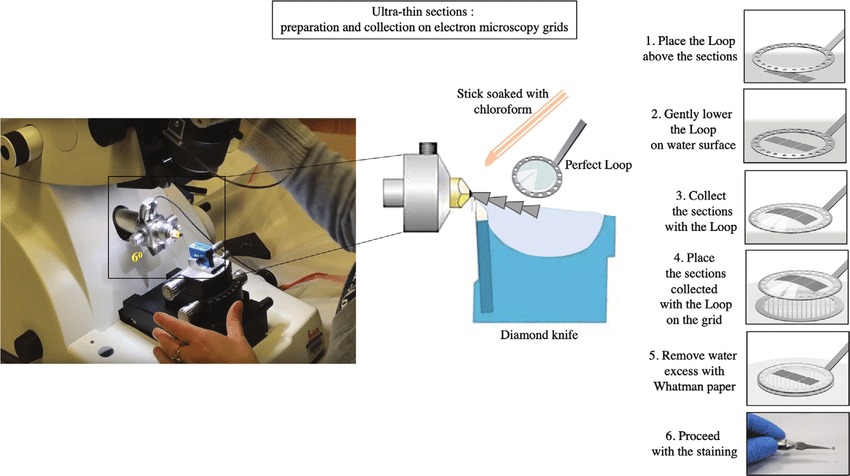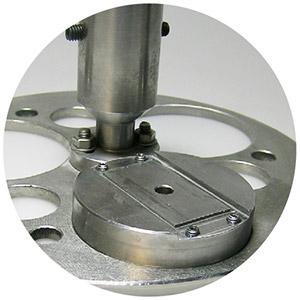Knowledge and familiarity with the method of preparing microscopic thin sections or Thin section preparation is necessary and useful for geologists. One of the tasks of a geologist in conducting geological studies is to sample an area of the strata and protrusions of the area, which are studied and analyzed after preparing thin sections of them. Samples are numbered by the geologist and recorded in a special booklet in such a way that by the magic of the year of sampling, different names and surnames of the geologist who performed the sampling operation and the number and order of the sample are written on the rock.
The specimens are then placed separately in special plastic bags and the plastic bag is closed. This prevents the specifications on the stone from being distorted, cracking, and possibly "crushing" the stones.
After performing the above steps, a list is prepared from the collected samples, in which, in addition to mentioning the geological characteristics, the geological area and structure studied and the date of preparation of the list, the characteristics of the samples are written in order and the lithology of the samples is in the opposite columns. Their probable age is mentioned according to geological studies and surveys in the land, the probable name of the formations, the initial stratigraphic column, the thickness of the strata and in some cases the names of the observed macrofossils.
After preparing the above list, the samples are placed in the prepared cans and the name of the geologist, the study area and the number of the first and last samples are written on the cans with the magic inside Aleppo and the door of Aleppo is closed properly.
The collected samples along with the above-mentioned list in the relevant department (Geological Survey of Iran or Oil Company, etc.) will be delivered to the section for the preparation of thin sections.

After preparing the thin sections
After preparing the thin sections, they are provided to the expert geologist along with the above-mentioned list for microscopic examination and analysis.
Preparation of thin sections from stone samples
In order to prepare thin sections of the presented stone samples, the following steps are performed in order:
stone cutting
In order to prepare the samples for cutting, they arrange their numbers on special wooden boards in order, and since the stone number is most likely to be distorted when cutting the stone, the stone numbers are written on a piece of paper and each number is placed under the sample so that after cutting, the stone is cut and the remaining piece of stone is placed on the above number (paper mentioned above) and the sample number is not mistaken. After cutting the above piece and preparing a rectangular cube piece The desired stone number is magically written on the above piece and the complete specifications of the sample (including a year of harvest - abbreviated to the geologist surname and sample number) are recorded on the remaining stone piece of the cut. There is a special battalion.
In order to do this with the left hand, place the sample under the cutting blade from the side that has the highest level of radar support or has the least slip, and adjust the part that we intend to cut under the blade, and Then, with the right hand, place the cutting blade on the stone and press on the blade to cut the stone blade.
The cutting method is such that by performing the least cutting operation of different stone surfaces, we get an almost "rectangular" cube with polished surfaces obtained by cutting with a cutting blade. Of course, stones that are larger than usual and have sharp points need more care, and finally, we cut the stones so that a significant piece of them remains so that if necessary, a thin section can be made from them again.
Polishing stone by sub machine
After cutting the stone and preparing the desired small sample, we polish it with a Saab machine and use random user powder, so that on the circular and rotating plate of the Saab machine, which has concentric grooves, some random working powder. Pour the rough type and when the rotating plate rotates quickly, place the surface on which the sample number is not written and move it in the opposite direction of the rotating plate so that the above-mentioned surface is completely "polished" and has possible grooves on the stone. The cutting blade of the stone should remain in an axial shape, so the surface of the stone should be completely "smooth". For testing, we can also pour water on the surface of the stone after polishing. It is not smooth and must be re-polished. Finally, the sample is washed with water.

Rubbing the stone on the glass surface
After that, we have done the above part with a sub-polishing machine. Pour some of the users' powder on thick glass and wet it. By pressing on the four sides of the sample surface and rotating and zigzagging it on the glass containing the user powder, we complete this step and wash the sample with water.
Drying and heating the stone
At this stage, place the sample on the heater to dry and heat.
Matte blade blades
One side of the thin blades of the slides used should be opaque so that the polished surface of the stone sample is glued to it. The difference is that in this step, soft carbadox powder is used and the surface of the blade is rubbed on the rotating plate of the submachine until it is completely opaque.
After matting the slides, we write the specifications of the sample by Rapid on one side of the blade. Then, place the prepared slide blades on the heater plate next to their stone samples so that they become hot as well.
Paste the stone on the blade of the slide
After the sample, the stone and the blade were completely heated. Using the Canadian balm glue, which is solid and pencil, hold the polished surface of the specimen to the surface of the stone and once the blade, both of which have been heated, and put the Canadian balm on the surface. It is pulled solid and because it placed the sling blade on the polished surface of the sample, it moved the sling blade on the polished surface of the stone with pliers and fingers (moving back and forth and rotating) until there are air bubbles between the two surfaces of the sling blade and the stone. Came out and no bubble was seen.
Meanwhile, the written specifications of the sample are placed on the sliding blade under the stone cover to be preserved in the next steps and not to be destroyed.
Stone cutting by special cutting machine
In this step, to reduce the thickness of the stone stuck on the sling blade, we cut it with a special
cutting machine so that we hold the sling blade with the fingers of the left hand and with the fingers of the right hand, we place the sample piece under the cutting blade and cut it somehow. That only a thin layer of stone remains on the blade.
Polishing stone by sub machine
At this stage, the surface of the thinned specimen is placed on a turntable (with concentric grooves) and moved. Either the blade breaks or the thin thickness of the stone disappears.
Eventually, the karma ends when the very thin thickness of the stone remains on the blade and when the light is exposed, the light passes through it completely and the clear cross-section is visible.
When rubbing the blade on the plate of the saw, the pressure of your hand should be concentrated in the middle of the blade. After this step, place the blade on the turntable of another Saab machine that is completely "smooth" and has no concentric grooves, and rotate it until a "thin effect with a clear background" remains on the blade. In this method, Coarse carpandum powder is used and finally, the blade is washed with water.
Rubbing the blade on the glass surface
After performing the above steps, rub the blade for the last time on a glass surface containing soft carbardum powder to soften the effect of a very thin layer of stone on the blade so that the thin cross-section is clearly visible in the light. The light passes through it, then look at the current section under a microscope to check the thickness of the rock layer. Ready-made quartz grains are white under a microscope.
Glue the blade
In the last step of the user, rub the balm on the thin layer of Canadian liquid adhesive stone and put the lamellar blade on it and put it on the heater for a few moments and move the lamellar on the lamellar blade with pliers to spread the glue completely. .
Then, in order to remove the glue that has already been struck between the stone layer and the blade, as well as the air bubbles under the lamellar, heat each side of the blade separately with a heater and press the tip of the pliers to remove the extra glues and air bubbles from under the lamellar. We take it out until the surface of the sections is completely thin and transparent.
Then, with a piece of cotton soaked in gasoline and a razor blade, remove the excess glue on the surface of the thin section and clean it thoroughly. At this time, the thin section is ready to study.
Contact Taif Azarin Company to buy all laboratory devices and equipment related to geology.